Caravaggio -Lighting the Way
I had decided that our next Blog would be about Light and J's Blog on Mattia Preti and the link with the style of Caravaggio has provided the perfect segue. So we will first look at Caravaggio and then move onto learning a little more about the importance of light in a painting.
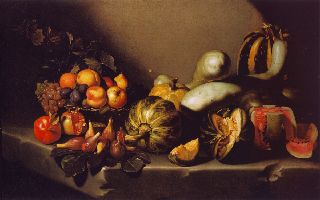
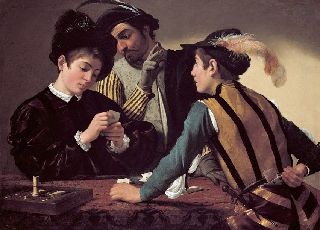
(Kimbell Art Museum, Fort Worth)
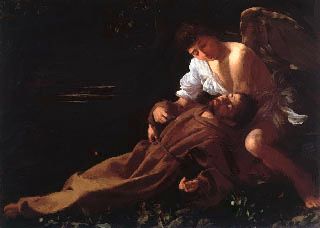
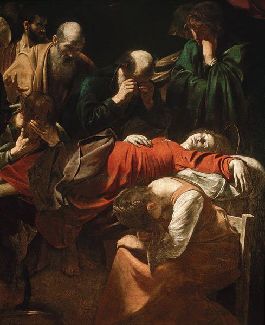
The Church Officials were shocked when they recognised the model Caravaggio had used for the Virgin Mary. She was a well known courtesan whose body had been found floating in a river.
Caravaggio also often included himself in the paintings using his own experiences to help achieve a reality not seen before in art. Young Sick Bacchus (1593) is thought to be based on Caravaggio's own image.
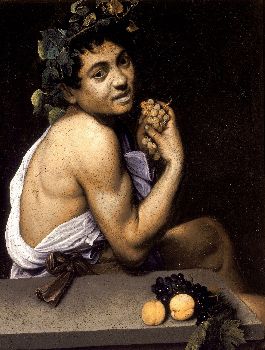
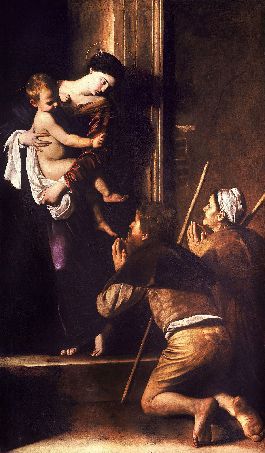
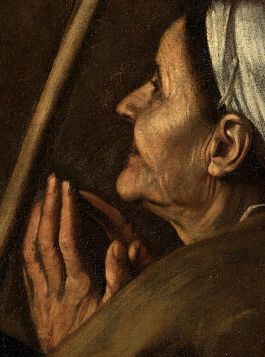

Bacchus (Dionysus in the Roman world) was the Greek god of wine, madness and ecstasy. In this painting Caravaggio has portrayed Bacchus as a 17th century Italian teenager- appropriate in any time period. Note that Bacchus is holding the wine in his left hand which has lead to the speculation that Caravaggio painted this image using a mirror with himself as the model. Furthermore, and this is delightful, upon the painting being restored a tiny reflection of Caravaggio, paintbrush in hand, was also discovered on the wine carafe! (Ref: https://theculturetrip.com/europe/italy/articles/10-artworks-by-caravaggio-you-should-know/)
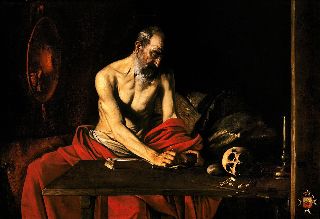
What Caravaggio was doing was to use shadow to emphasise the highlighted aspects of the image. You will also note how dominant the shadows are possibly because there is little variation in the colour tones which look to me to have been painted with Burnt Umber and Raw Umber.
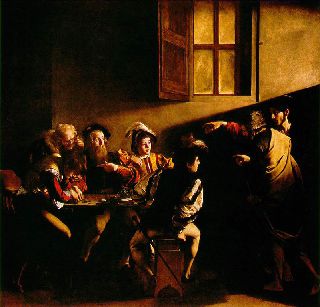
David Hockey, one of the most influential British artists of the C20th has suggested that Caravaggio was using a form of the camera obscura-like device which used a mirror to reflect the image of a model standing in bright light into a darkly lit room. The camera obscura was certainly being used by the the C17th Dutch Masters, such as Johannes Vermeer, but the jury is still out on how Caravaggio managed to create such lifelike subjects.
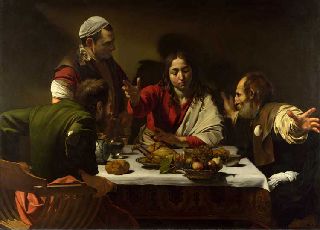
The arms of the apostle on the right stretches into the viewer's space while the resurrected Christ's right hand seems to embrace his audience- one that is far larger than those gathered around him at the table. Even the teetering basket of fruit seems as if it is about to fall to the viewer's feet. (Ref: https://www.artble.com/artists/caravaggio/moreinformation/styleand_technique)
Caravaggio had a remarkable effect on the world of painting especially in terms of the Baroque style evolving at the time. Some of the artists who followed his techniques include Peter Paul Rubens and Rembrandt. The artists who followed his style were often called the Caravaggisti or Caravagesques.
But Caravaggio's influence goes much further as many see his works as containing the seeds of what painting was to become. The 20th-century art historian André Berne-Joffroy stated, What begins in the work of Caravaggio is, quite simply, modern painting.
Look at the light around you. Notice how it falls; notice how it changes. Study the contrasts of light and shade caused by the sun.
